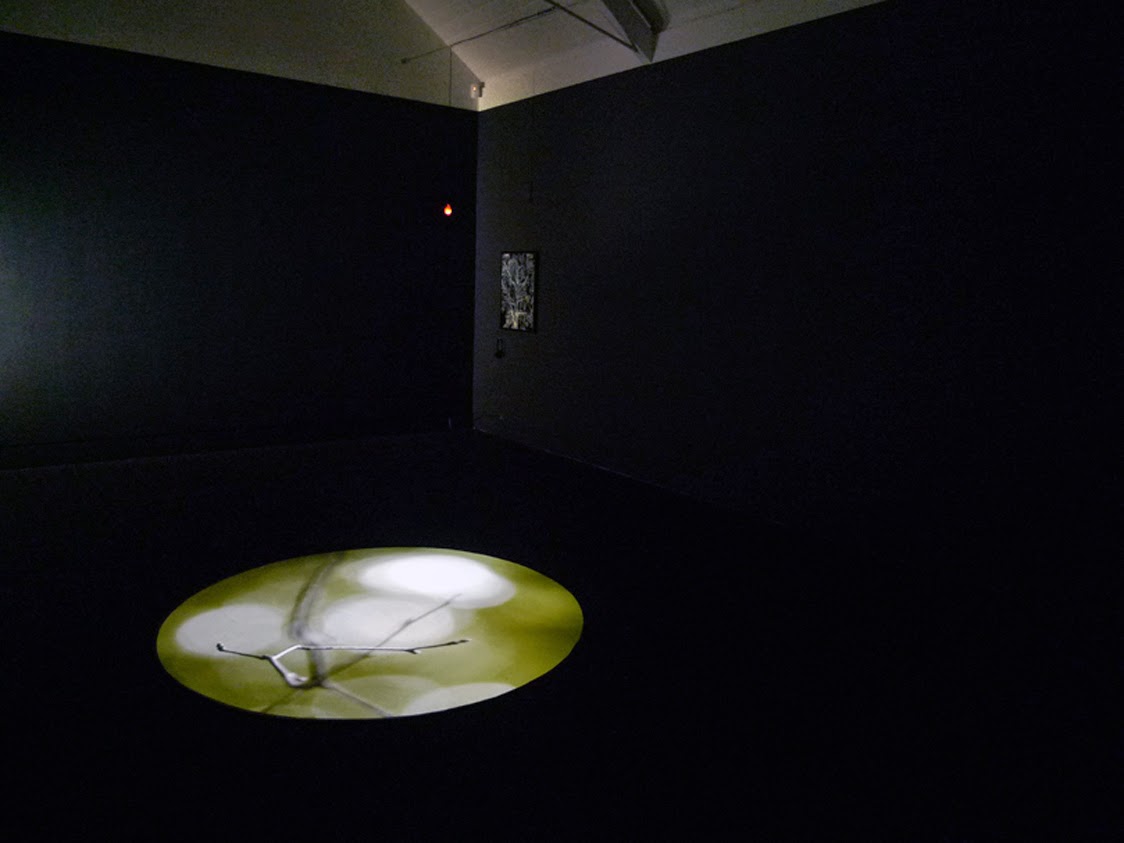 |
| Juan delGado presenting The Flickering Darkness at Fundacion Laxeiro, Vigo |
The Flickering Darkness (Revisited) premieres in Spain
Last October, Juan delGado travelled to Spain to present his project The Flickering Darkness (revisited) at the Fundación Laxeiro. His artistic director introduced delGado's work to an enthusiastic audience willing to learn more about this project produced in Colombia as a result of an artist in residence in collaboration with British Council and the Colombian Ministry of Culture.
In his presentation, Juan described the methodology he followed to research ideas about the politics of food, urban territory and displacement. His arrival in Bogotá brought him to meet a Colombian artist Lorena Luengas, who welcomed him to the Tortuga House where Juan would spend the following three months. Lorena introduced Juan to her art project called Miedo a Que? (Afraid of What..?) in which she had been working since 2006. In this project, she explored the level of fear that many people experience depending the neighbourhood they find themselves - as she was describing her work, Juan started to realise that it was a very similar project he had come to Colombia to do. This strange coincidence prompted him to leave his 'original' idea aside and... walk.
And he walked, during the following week, he walked down Bogotá's neighbourhoods of La Candelaria, Egipto, El Carmen, San Cristobal, Ciudad Kennedy... what he saw in these random hikes through mostly colonial buildings began to permeate in his perception of people and the narrative of the city he started to appreciate.
Food, a lots of food; food he has not seen before. Everywhere.
One morning he decided to pay a short visit to Fundación Fernando Botero, where he had the opportunity to see the work of the International acclaimed Colombian artist. Botero's work is well-known for depicting people and figures in large, exaggerated volume, which can represent political criticism or humour. In his stroll around the Museum, delGado encountered several works where violence is graphically represented. It was in a room where something caught his attention: a series of small drawings where he had used food as a way to represent violence; in these sketches the characters throwing pieces of melon or any other sort of tropical fruits at each other. He was surprised that the idea had now been developed further as these narratives were nowhere to be seen in his paintings.
 |
| One of Botero's paintings about violence in Colombia |
Walking through the galleries, another small drawing caught his attention. This time, a man carrying what seemed to be his possessions on a massive bag in which also death was part of the luggage; that small work encapsulated the terrible reality of thousands of people who had been exposed to the violence, kidnaps and murders that devastated many communities across the country and forced them out to seek refugee in the main cities.
Juan explained how the subject of violence and displacement was explored using food as a metaphor to investigate the social stratification and how many of the thousands of people are forced to leave their home towns. He wanted to create this three-channel installation to show the "invisibility" of this tragedy to the general population; a population which is fed by those who are not seen nor acknowledged as victims of the terrible conflict Colombia is under.

















